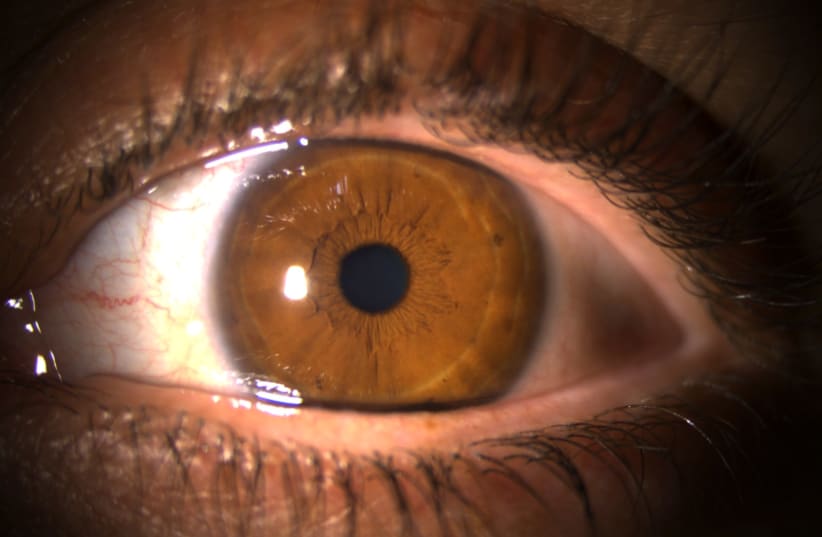Cataract (Yarod in Hebrew) is the clouding of the eye's natural lens. Typically, the lens is transparent and assists in focusing light rays onto the retina, which is the part of the eye that allows us to see shapes, colors, and light. The most common cause of cataract formation is the natural aging process of the lens.Cataracts are the leading cause of vision impairment among the adult population. Approximately 45% of people aged 75 and older suffer from cataracts. Other causes that can lead to the formation of cataracts include injury, congenital or acquired diseases such as diabetes, smoking, and the use of certain medications like steroids.In the initial stage, cataracts in the eyes can manifest as a change in eyeglass prescription only. Later, additional symptoms may appear, including persistent blurred vision, double vision (in one eye,) faded color vision, glare, and impaired night vision quality.
How can you diagnose cataracts?
To diagnose cataracts, an ophthalmologist measures visual acuity, checks the eyeglass prescription, dilates the pupils, and directly observes the lens in the eye. Nowadays, the only effective treatment is surgery, where the cloudy lens is removed from the eye and replaced with an artificial lens.
Advanced lenses
Multifocal Lenses - These lenses offer a certain compromise on vision quality in exchange for reducing the need for glasses. These lenses require adaptation and are not suitable for people who demand perfect results. It is important to note that even if multifocal lenses are implanted during cataract surgery, glasses may still be needed.Toric Lenses - These lenses are suitable for patients with corneal astigmatism (a condition where the cornea is elliptical, causing distortion and vision impairment). These lenses incorporate a cylinder (similar to eyeglass lenses) intended to compensate for this distortion and reduce dependence on glasses after surgery. Currently, there are combined toric and multifocal lenses available.Most cataract surgeries are performed on an outpatient basis with local anesthesia. During the operation, a surgeon creates small – approximately 2mm - incisions in the cornea and uses a device that assists in the emulsification of the natural lens of the eye. This device works at ultrasonic speed to break down and remove cloudy lenses due to cataracts.In some stages of the surgery, the surgeon may use a laser to cut tissue in the eye. After the cataract is removed, the surgeon will implant the chosen intraocular lens based on measurements taken before the cataract surgery. Before the surgery, the surgeon will seal the incisions made at the beginning, usually without stitches.After surgery, one has to apply antibiotic eye drops, steroids, and non-steroidal anti-inflammatory drops such as BromSite (BROSITE.) The treatment with non-steroidal anti-inflammatory drops is intended to relieve pain after the surgery, reduce the inflammatory process in the eye, and prevent the development of retinal edema, which can decrease visual acuity.BromSite drops should be applied to the operated eye twice a day, which improves adherence to the treatment and reduces the chance of surface eye damage, which can decrease visual acuity and cause a sensation of grittiness, burning, and blurred vision. This is a significant advantage of BromSite over other eye drops in this category, which require more frequent application.After the surgery, there is usually no restriction on returning to almost full activity. In the immediate period following the surgery, you should avoid swimming and strenuous physical activity. There is no restriction on reading, watching TV, intimate relations, and working on a computer. You can cook, engage in light sports activities, and bend over.
It can take several days or weeks for vision to become clear again. The prescription for glasses will be given after the healing process is complete, which is about two to eight weeks after surgery.
Frequently Asked Questions:
Q: What is a cataract (in Hebrew, "Yarod")?A: A cataract is the clouding of the natural lens in the eye, which can cause blurred vision.Q: What causes cataracts?A: Aging is the primary cause of cataract development.Q: What are the symptoms of cataracts?A: Changes in eyeglass prescription, blurred vision, double vision (in one eye), faded color vision, glare, and impaired night vision quality.Q: What is the treatment for cataracts?A: The only treatment that can help with cataracts is surgery to remove the cloudy lens and replace it with an artificial lens.The author of this article is an expert in Surface Eye Diseases and Surgeries, Cornea and Cataracts, and is the Director of the Ophthalmology Department at Shaare Zedek Medical Center.

